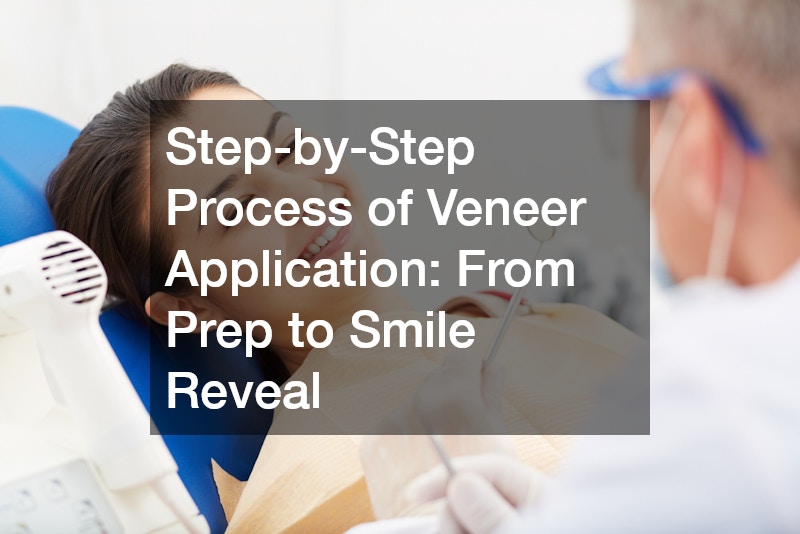
Key Takeaways
-
Veneers correct chips, discoloration, gaps, and minor misalignment for a natural, long-lasting smile.
-
Expert veneers specialists ensure proper preparation, precise bonding, and seamless aesthetics.
-
Same-day veneer applications offer immediate results with fewer appointments.
-
Careful at-home hygiene and regular checkups extend the lifespan of veneers.
-
Digital planning and lab fabrication by veneers specialists optimize fit, color, and function.
-
Understanding the procedure, maintenance, and alternatives reduces complications and enhances satisfaction.
A radiant smile can profoundly impact confidence, self-esteem, and first impressions. Dental veneers offer a highly effective solution for improving the appearance of teeth by correcting discoloration, chips, gaps, and minor misalignments. Unlike teeth whitening or minor cosmetic treatments, veneers provide a long-lasting, uniform appearance by covering the front surface of teeth with a thin, durable shell.
For patients seeking a flawless outcome, consulting with veneers specialists is essential. These professionals have the expertise to customize each veneer to match your natural teeth, ensuring comfort, proper alignment, and aesthetic perfection. Today, patients have the option of traditional multi-step veneer procedures or same-day veneer applications that allow for immediate results while maintaining quality. Understanding the process from start to finish can make the experience less intimidating, ensure better results, and help patients care for their veneers properly after placement.
Understanding Veneers
Dental veneers are thin shells, typically made from porcelain or composite resin, designed to enhance the aesthetics and functionality of your smile. Porcelain veneers are renowned for their translucency, durability, and resistance to staining, whereas composite veneers can be applied more quickly and are easier to repair but may not last as long.
Benefits of veneers include:
-
Correcting persistent discoloration that cannot be addressed with whitening.
-
Covering minor chips, cracks, or worn teeth for a smoother smile.
-
Closing small gaps or correcting slight misalignment.
-
Improving the appearance of uneven or misshaped teeth.
-
Offering a stain-resistant and long-lasting cosmetic solution.
Limitations to consider:
-
Enamel removal is required, making the procedure irreversible.
-
Teeth with severe decay, extensive fillings, or significant misalignment may not be suitable.
-
Habits such as grinding or biting hard objects can compromise the veneers.
Veneers specialists assess each patient individually, considering oral health, bite alignment, and lifestyle to determine whether veneers are the ideal solution or if alternatives should be explored.
Initial Consultation and Smile Design
Assessment and Planning
The first step in the veneer process involves a thorough evaluation with an experienced veneers specialist. During the consultation, the dentist examines the teeth and gums, evaluates bite alignment, and reviews medical and dental history to ensure veneers are appropriate. Patients also discuss their aesthetic goals, including preferred tooth color, shape, and the number of veneers desired.
Key aspects of the consultation include:
-
Comprehensive oral examination with X-rays or digital scans.
-
Bite assessment to prevent future functional problems.
-
Photographs and measurements to guide treatment planning.
-
Discussion of realistic expectations, costs, and procedural options.
Digital Smile Design
Many modern veneers specialists use digital imaging and 3D modeling to simulate the final smile. This process allows patients to preview their results and provides a blueprint for veneer fabrication.
Benefits of digital smile design:
-
Precise visualization of tooth shape, size, and color.
-
Assessment of how veneers integrate with bite and neighboring teeth.
-
Ensures patient approval before fabrication begins, reducing the likelihood of dissatisfaction.
This stage is particularly important for complex cases, allowing veneers specialists to plan each veneer with accuracy and anticipate potential adjustments.
Tooth Preparation
Prepping Teeth for Veneers
Before veneers are bonded, a thin layer of enamel (usually 0.3–0.7mm) is removed to accommodate the veneer and ensure a natural fit. Local anesthesia is typically applied to minimize discomfort.
Steps involved in preparation:
-
Precise enamel removal to balance natural tooth preservation with secure veneer placement.
-
Shaping teeth for optimal adhesion and seamless alignment.
-
Smoothing edges to prevent gum irritation and promote comfort.
Experienced veneers specialists carefully measure enamel removal to maintain tooth health while providing a durable and aesthetically pleasing final result.
Taking Impressions
After preparation, impressions are taken to ensure veneers fit precisely. Methods include:
-
Traditional putty molds to capture tooth anatomy.
-
Digital intraoral scans for highly accurate 3D models used in fabrication.
Impressions are critical for achieving a perfect fit, correct bite alignment, and a natural appearance. They guide both the veneers specialists and the dental laboratory in crafting custom veneers.
Temporary Veneers
In traditional veneer procedures, temporary veneers may be applied to protect prepared teeth while permanent veneers are fabricated. Temporary veneers:
-
Shield teeth from sensitivity and external damage.
-
Allow patients to test the look and feel of veneers.
-
Require careful handling since they are less durable than permanent ones.
Veneer Fabrication
Laboratory Process for Porcelain Veneers
Custom porcelain veneers are created in a dental lab using the impressions or scans provided by veneers specialists. The lab crafts each veneer to match the desired shape, color, and translucency, resulting in a natural, long-lasting appearance.
Steps include:
-
Material selection to match shade and translucency of surrounding teeth.
-
Shaping veneers to mimic natural tooth anatomy.
-
Polishing and finishing for a smooth, life-like surface.
-
Quality checks by veneers specialists to ensure durability and proper aesthetics.
Traditional porcelain veneer fabrication usually takes 1–2 weeks, during which temporary veneers protect the teeth.
One-Day or Same-Day Veneer Applications
Advances in CAD/CAM technology have made same-day veneers possible. Experienced veneers specialists can complete the entire process—from scanning to placement—within a single appointment.
Benefits of same-day veneers:
-
Immediate smile transformation without multiple visits.
-
No need for temporary veneers.
-
Reduced risk of miscommunication between the dentist and lab.
This approach is ideal for patients seeking rapid results or those with busy schedules, while still benefiting from the expertise of veneers specialists.
Bonding the Veneers
Tooth Surface Preparation
Prior to bonding, teeth are thoroughly cleaned and etched to create an optimal surface for adhesion. Dry, contamination-free teeth ensure a strong, long-lasting bond.
Trial Placement
Veneers specialists often perform a trial placement before permanent bonding to assess:
-
Alignment with neighboring teeth.
-
Bite function and occlusion.
-
Color match and overall appearance.
This allows for adjustments to achieve the perfect fit and natural aesthetic.
Final Bonding
The permanent bonding process includes:
-
Applying dental adhesive to the veneer and positioning it accurately on the tooth.
-
Using a curing light to harden the adhesive quickly.
-
Removing excess material and polishing edges for a smooth finish.
-
Final bite adjustments to ensure comfort and functionality.
Veneers specialists meticulously ensure that each veneer sits perfectly, creating a natural, seamless smile.
Finishing Touches and Immediate Post-Procedure Care
Polishing and Adjustment
After bonding, veneers are polished and checked for:
-
Proper bite alignment to prevent discomfort while chewing.
-
Smooth edges to avoid gum irritation.
-
Overall aesthetics, including shape, color, and symmetry.
Post-Procedure Care
Mild sensitivity is common for a few days after bonding. Veneers specialists recommend:
-
Avoiding hard, sticky, or stain-prone foods immediately after placement.
-
Gentle oral hygiene with soft-bristle toothbrushes and non-abrasive toothpaste.
-
Scheduling follow-up visits to monitor veneer integrity and oral health.
Follow-Up and Maintenance
Regular Checkups
Routine dental visits allow veneers specialists to monitor:
-
Veneer integrity and detect chips or cracks early.
-
Gum health around the veneers.
-
Wear or damage caused by habits like grinding.
Longevity of Veneers
-
Porcelain veneers typically last 10–15 years; composite veneers last 5–7 years.
-
Lifespan depends on oral hygiene, lifestyle habits, and avoiding trauma.
-
Nightguards may be recommended for patients with bruxism to prevent premature damage.
Caring for Veneers at Home
Tips for long-lasting results:
-
Brush twice daily with non-abrasive toothpaste.
-
Floss carefully to protect gum margins and veneer edges.
-
Avoid stain-causing foods like coffee, tea, or tobacco.
-
Schedule routine checkups with veneers specialists.
Pros, Cons, and Alternatives
Advantages
-
Corrects multiple cosmetic concerns simultaneously.
-
Resistant to stains and durable with proper care.
-
Enhances confidence and provides a natural-looking smile.
Limitations
-
Irreversible enamel removal.
-
Higher cost compared to other cosmetic treatments.
-
Temporary sensitivity may occur after placement.
Alternatives
-
Dental bonding for minor repairs or discoloration.
-
Crowns for severely damaged teeth.
-
Orthodontics for more significant alignment issues.
Veneers specialists can advise on alternatives if veneers are not the best solution for your dental needs.
Dental veneers offer a transformative solution for patients seeking a confident, beautiful smile. From consultation, tooth preparation, and fabrication to bonding, finishing, and follow-up care, each step requires precision and expertise. Consulting with experienced veneers specialists ensures a predictable, high-quality result, whether opting for traditional multi-step veneers or modern same-day applications. With proper care and maintenance, veneers can provide a long-lasting enhancement, giving patients a radiant smile for years to come.



